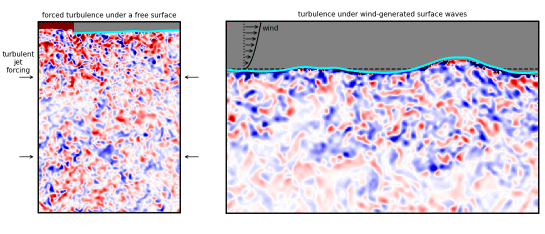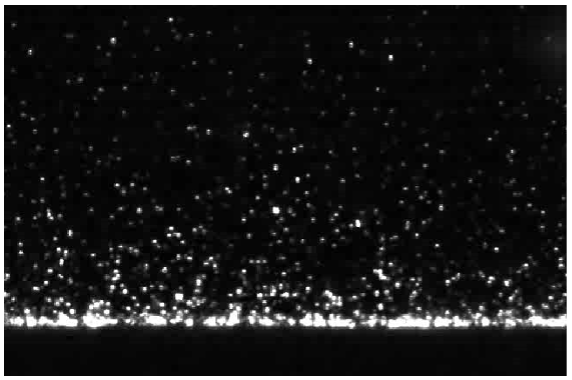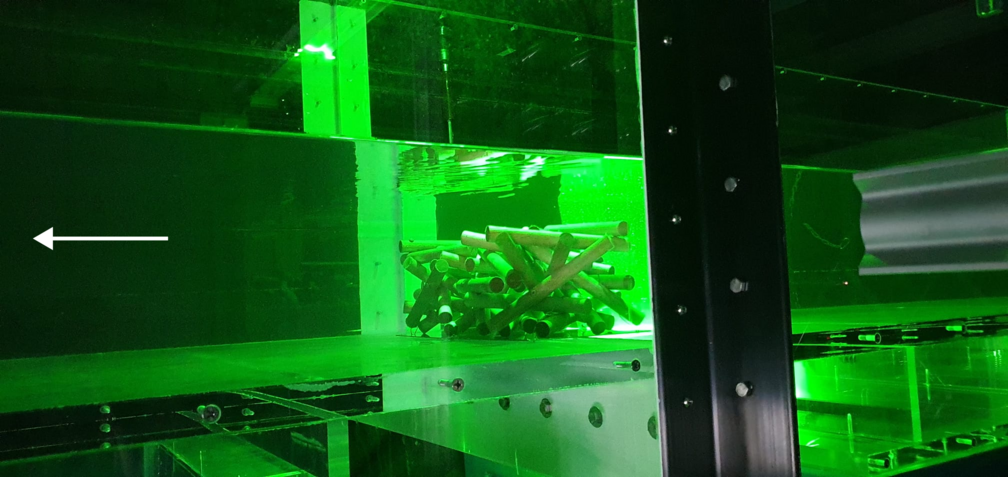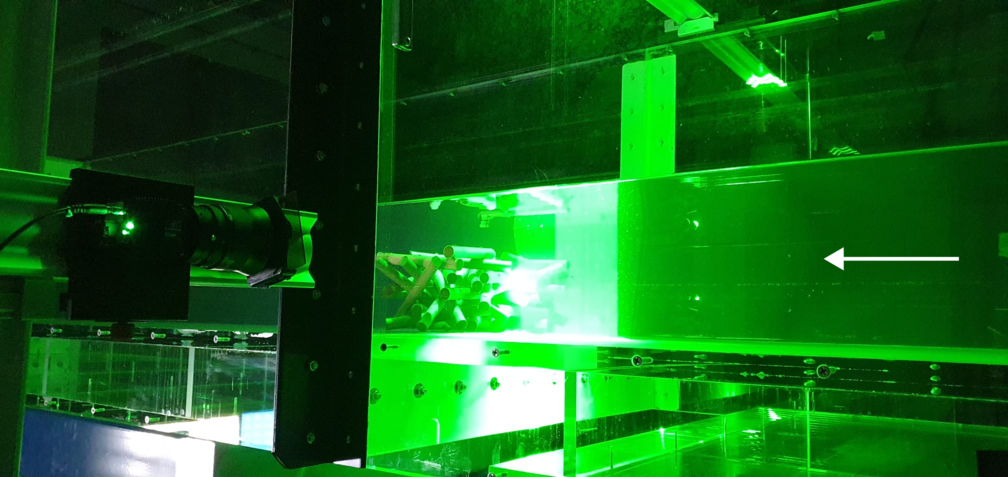Environmental flows
Studying the effect of wind and waves in a turbulent environment.
Turbulence underneath free surfaces
We investigate the structure of turbulence in the vicinity of free surfaces in various configurations. In one experiment, shown on the left, homogeneous turbulence is generated in the bulk of a liquid by arrays of randomly-actuated synthetic jets. In another, shown on the right, wind blown along the water surface in a long channel induces both surface gravity waves and turbulence in the water. In both setups, particle image velocimetry is used to obtain the vorticity fields (shown in red and blue), and laser-induced fluorescence is used to locate the position of the air-water interface (shown in cyan).

In our eight metre long test-section we can vary the flow rate and turbulence intensity in the water, and can generate waves with a mechanical wave-maker or by blowing wind over the water surface. We can simulate all kinds of sea-states, from relatively calm non-breaking waves, to stormy conditions with large breaking waves, heavy air-bubble entrainment, and strong sea-spray. Currently we limit ourselves to the more calm conditions, and are studying the turbulence in the source layer that spans roughly one integral length scale below the free surface. We use planar particle image velocimetry to measure the flow below the surface in planes of different orientations, and laser-induced fluorescence to distinguish the water-phase from the air-phase and to extract the profile of the surface waves. We are mainly interested in unraveling the turbulence profile in this source layer, its interaction with the turbulence in the bulk, and the imprint it leaves on the free-surface.
Aeolian saltation dynamics
Sediment transport shapes the world in deserts and coastal regions. It impacts ecosystems in many significant ways, ranging from providing nutrition supply to the ocean to desertification and influencing climate change. Aeolian saltation is a specific but common mode of sediment transport, where the wind driven particles hop over the sand surface in a continuous cycle of entrainment and splashing. The characteristics of the fluid flow are strongly modulated by the saltation, which causes a complex two-way coupling. This project aims to experimentally investigate the dynamics of the particle in the saltation layer with state-of-the-art high-speed imaging and image analysis to increase our understanding of the rich physics of this phenomenon.

Ecological fluid dynamics
Nature-based solutions (NBS) such as logjams and vegetation patches are common measures used in river restoration projects to regain flow diversity leading to the creation and improvement of habitats for aquatic organisms. We study the influence of different NBS-setups on the flow field. Specifically, we are interested in the turbulent structures and wake characteristics created by NBS as well as the response of benthic macroinvertebrates to NBS. By combining physical and ecological considerations, we can contribute to an improved design of NBS and therefore, a more targeted application of NBS regarding the creation of habitats for aquatic species.
This project is part of the SNSF Ambizione project “Ecological fluid dynamics for habitat creation in river systems”.

